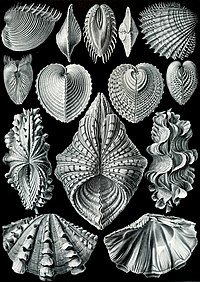
Photo from wikipedia
To access the nutritional quality of the Ruditapes philippinarum, a comprehensive quality evaluation procedure is always important to be established. In this study, fifteen nutritional quality evaluation indicators of R.… Click to show full abstract
To access the nutritional quality of the Ruditapes philippinarum, a comprehensive quality evaluation procedure is always important to be established. In this study, fifteen nutritional quality evaluation indicators of R. philippinarum from 7 months were analyzed, and the most important indicators were determined using a combination of multiple chemometric methods such as correlation analysis (CA), principal component analysis (PCA), and system cluster analysis (SCA). Significant differences in nutritional quality were observed across the 7 months, as per the ANOVA results (P < 0.05). The coefficient of variation values for the fifteen evaluation indicators for R. philippinarum across 7 months was 1.67–43.47%. The CA results revealed that some indicators were correlated to each other within a certain range. Four principal components with eigen-values > 1 were obtained with PCA, and a cumulative contribution of 92.11% was achieved. In addition, four essential quality indicators were extracted using SCA. Using these four indicators, a simple and efficient procedure can be applied for quality control in aquaculture.
Journal Title: Journal of Food Science and Technology
Year Published: 2020
Link to full text (if available)
Share on Social Media: Sign Up to like & get
recommendations!